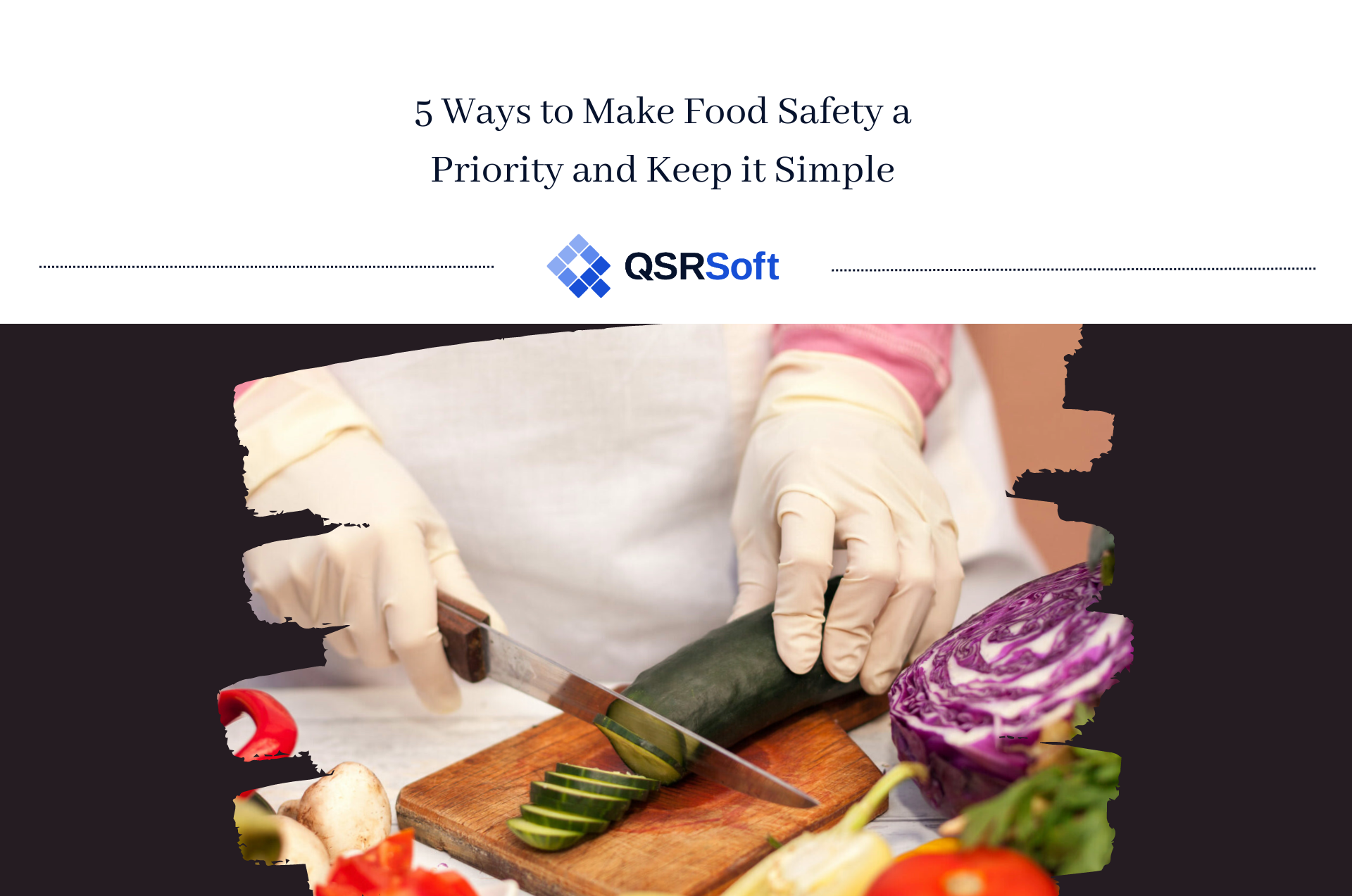Food safety is so important for restaurants, especially in the fast-paced quick-serve industry. Without proper food safety and sanitation protocols, focusing on sales numbers is moot. And restaurants that ignore those safety standards will face government sanctions such as fines or worse, getting shut down.
So here are 5 ways to make food safety a simple priority.
#1: Follow Strict Personal Hygiene
All employees should follow strict personal hygiene protocols. This means washing hands properly and on a regular basis. Good personal hygiene protocols include:
- Using hot soapy water
- Washing for a minimum of 20 seconds
- Using proper scrubbing techniques to get under fingernails, in between fingers, as well as around the wrists
- Washing hands at least every three hours and after using the restroom
- Drying properly before working with food or equipment
- Washing hands before and after touching food
- Keeping nails clipped and clean
- Wearing a clean uniform for each shift
- Wearing gloves and hairnets
- Open wounds should be covered on arms and hands with waterproof bandages
#2 Separate Raw and Cooked Food
Bacteria can spread from one food to another so keep raw and cooked foods separated.
- Keep raw meat, seafood, and eggs away from other foods
- Marinades already used on raw food should be brought to a boil before using again
- Use separate cutting boards and dishes to handle raw food
#3 Practice Consistent Hygiene
Food safety is a beginning to end process and includes cleaning raw materials correctly. Here are some tips on cleaning raw foods:
- Fruits, vegetables, and fresh herbs should be washed under running water. Be sure that employees take care not to splash water out of the sink during the washing process as this can cause bacteria to spread.
- Items such as fish, eggs, meat, and poultry should not be washed.
- Before opening canned goods, clean the lids of cans to prevent contamination when opening.
- When shopping for raw foods, carefully inspect food. Select fruit and veggies that aren’t bruised or broken, and store them away from raw meat and seafood while shopping and transporting the food.
#4 Follow Proper Storage, Cooking, and Holding Protocols
Cooking food properly is probably one of the things thought about most when it comes to food safety, but holding it for delivery or serving is just as important. Be sure to:
- Store foods at the proper safe temperature as designated by the FDA
- Cook meats to the proper safe temperature as designated by the FDA
- Use food thermometers to ensure food is stored and cooked to the proper temperature
- Follow cold holding norms (the fridge should be at 40º F or less and the freezer should be at 0º F or less) and cold-held meals should be checked every two hours
- Follow hot holding norms (temperatures vary based on food item, but generally, food should be around 135º F and egg dishes should reach 165º F before being served)
[Bonus: QSRSoft has an amazing resource within our Digital Food Safety solution that has bluetooth thermometer temperature checks, making it easy for you to manage storage protocols!]
#5 Clean and Maintain Your Equipment and Dishes
Plates, cutlery, knives, countertops, cutting boards, and other kitchen equipment and surfaces should be washed with warm, soapy water regularly. Kitchen equipment is expensive, so keep them well and regularly maintained to ensure their functioning and longevity. With QSRSoft, you can keep your equipment running and reliable with consistent, planned maintenance by scheduling and assigning key preventative maintenance tasks and accountability functions. Learn more on our website today about our Planned Maintenance solution.

